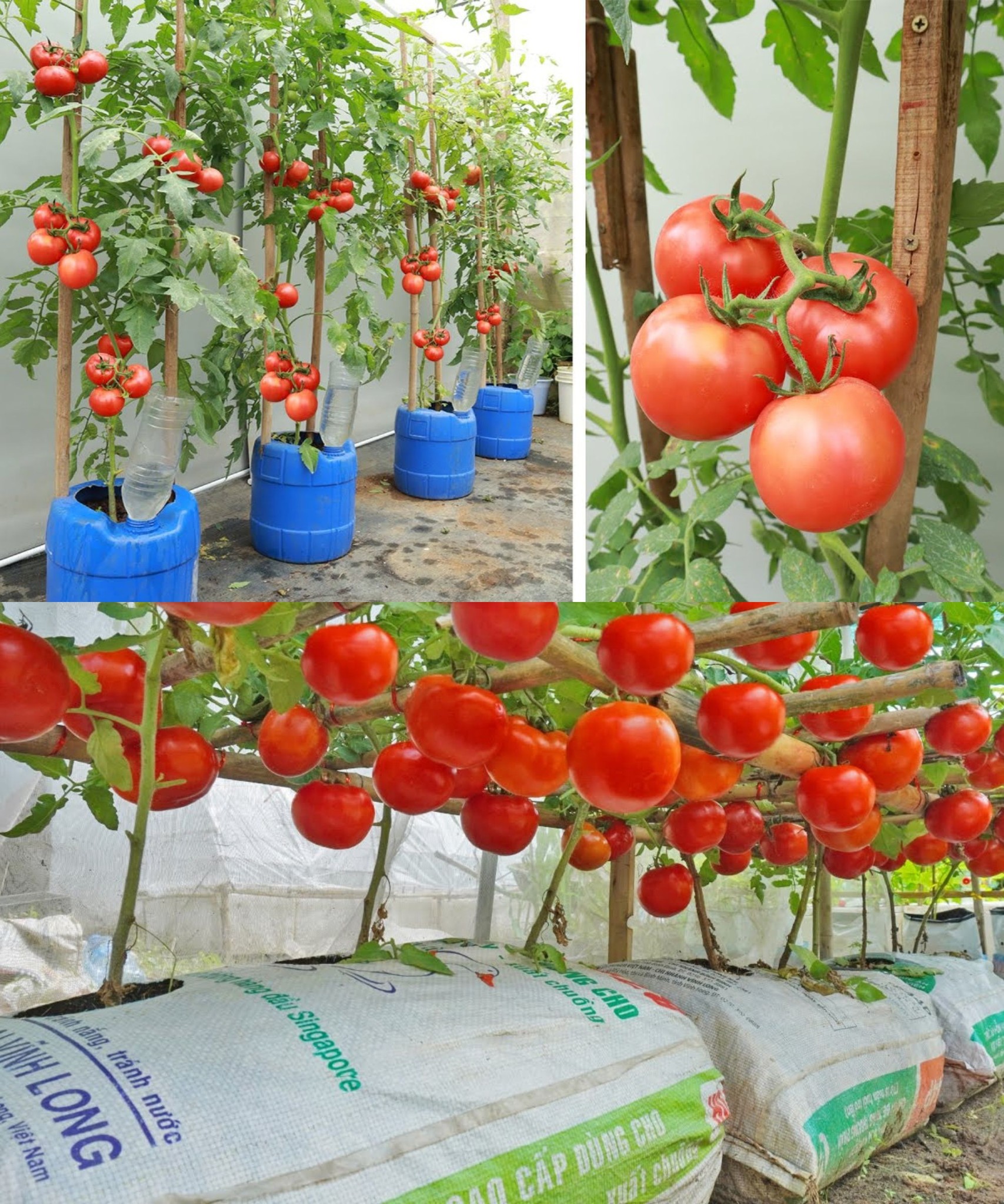To grow bigger, juicier tomatoes, you’ll need to pay attention to several key factors, including soil preparation, watering, fertilizing, pruning, and proper care. Here’s a guide to help you achieve those delicious, succulent tomatoes:

1. Choose the Right Tomato Variety:
- Select a tomato variety known for producing large, juicy fruits. Beefsteak varieties are often a good choice.
2. Provide Adequate Sunlight:
- Tomatoes thrive in full sunlight. Ensure they receive at least 6-8 hours of direct sunlight each day. If you’re growing tomatoes indoors, consider using grow lights to supplement natural sunlight.
3. Quality Soil Preparation:
- Use well-draining, nutrient-rich soil with plenty of organic matter. Amend the soil with compost or well-rotted manure before planting to ensure a good foundation for your tomato plants.

4. Proper Spacing:
- Plant your tomato plants with sufficient spacing to allow good air circulation. This helps prevent diseases and ensures each plant gets enough nutrients.
5. Mulch:
- Apply a layer of organic mulch around the base of the tomato plants to retain moisture, regulate soil temperature, and suppress weeds.
6. Consistent Watering:
- Tomatoes need consistent moisture, especially during the growing season. Water deeply and regularly to keep the soil consistently moist, but be cautious not to overwater, as this can lead to issues like root rot.

7. Fertilize Appropriately:
- Use a balanced fertilizer with a higher ratio of phosphorus and potassium. Phosphorus promotes flower and fruit development, while potassium enhances fruit quality. Follow the recommended application rates on the fertilizer package.
8. Pruning:
- Regularly prune your tomato plants to remove suckers (the small shoots that develop between the main stem and branches). This directs the plant’s energy towards fruit production and helps increase air circulation, reducing the risk of diseases.
9. Provide Support:
- Use stakes, cages, or trellises to support your tomato plants as they grow. This prevents the plants from sprawling on the ground, reduces the risk of diseases, and supports the weight of the developing fruits.
10. Tomatoes Need Calcium:
- Ensure your tomato plants receive adequate calcium, as a deficiency can lead to blossom end rot. You can add crushed eggshells or calcium-rich amendments to the soil.
11. Proper Harvesting:
- Harvest tomatoes when they are fully ripe. The flavor and juiciness peak when tomatoes are allowed to ripen on the vine. Pick them when they have reached their mature color and give slightly to gentle pressure.
12. Disease Prevention:
- Keep an eye out for common tomato diseases such as blight and wilt. Use disease-resistant varieties when possible, and promptly remove any affected leaves to prevent the spread of diseases.
By following these guidelines, you can enhance the size and juiciness of your tomatoes. Remember that successful tomato cultivation requires patience and consistent care throughout the growing season.
